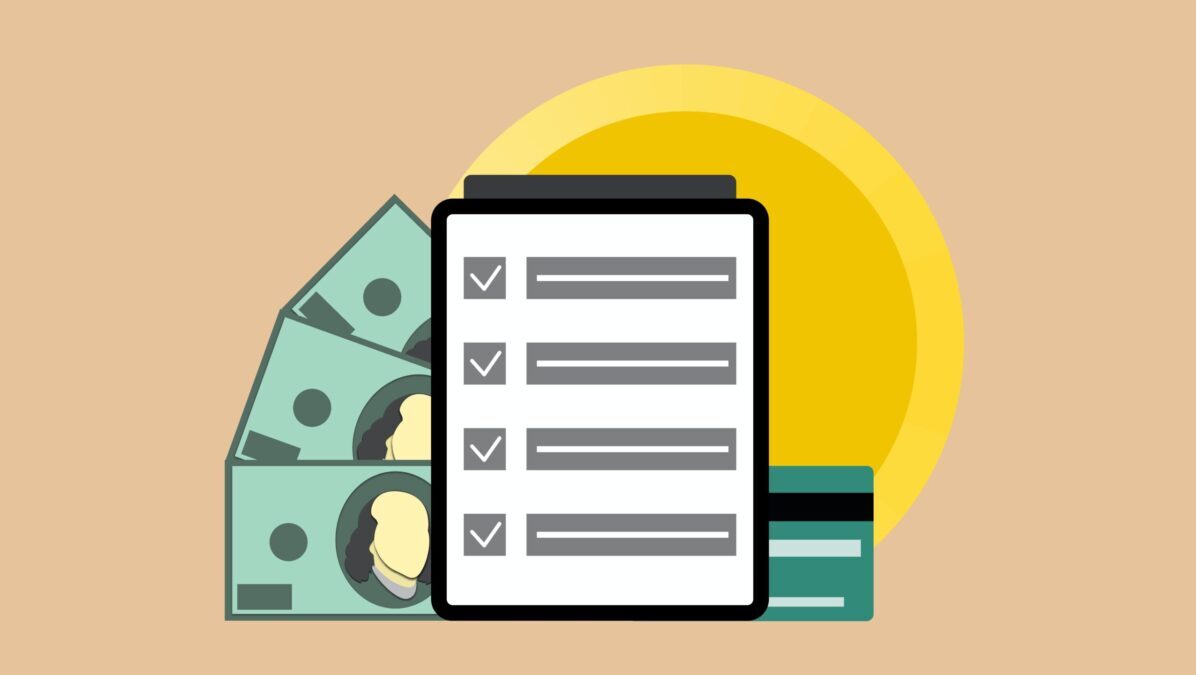The Ultimate Guide to Creating and Implementing a Personal Finance Budget Template
Are you tired of constantly feeling stressed about your finances? Do you wish you had a better understanding of where your money is going each month? Look no further – we’ve got you covered.
In this ultimate guide, we will walk you through the process of creating and implementing a personal finance budget template that will revolutionize the way you manage your money.
Whether you’re a seasoned budgeter or completely new to the concept, this guide is designed to help you take control of your financial future. We’ll break down the key steps to creating an effective budget template, from tracking your income and expenses to setting realistic financial goals. Plus, we’ll provide you with valuable tips and strategies to ensure long-term success.
Are you ready to finally achieve financial freedom? Let’s dive in and discover the power of a personal finance budget template. Your journey to financial success starts here.
Why is a budget template important for managing personal finances?
A budget template is a crucial tool for managing personal finances. It provides a structured framework for tracking income and expenses, helping you gain visibility into your financial situation. With a budget template, you can easily identify areas where you’re overspending, make necessary adjustments, and prioritize your financial goals. By creating a budget template, you’re taking the first step towards financial empowerment and achieving long-term financial stability.
When it comes to personal finances, knowledge is power. A budget template allows you to gain a clear understanding of your income, expenses, and financial obligations. It helps you visualize your financial landscape and make informed decisions about your spending habits. By using a budget template, you’ll have a complete picture of your financial health, enabling you to make necessary adjustments and plan for the future.
Types of personal finance budget templates
There are several types of personal finance budget templates available, each with its own unique features and benefits. The most common types include:
1. Monthly Budget Template: This type of budget template is designed to track income and expenses on a monthly basis. It provides a comprehensive overview of your finances for each month, allowing you to monitor your spending patterns and make adjustments as needed.
2. Annual Budget Template: An annual budget template is ideal for those who prefer to plan their finances on a yearly basis. It helps you set long-term financial goals and track your progress throughout the year. This type of budget template is especially useful for planning major expenses, such as vacations or home renovations.
3. Zero-Based Budget Template: A zero-based budget template requires you to allocate all of your income towards various expenses and financial goals. With this type of budget template, every dollar has a purpose, ensuring that you’re maximizing your financial resources and avoiding unnecessary spending.
How to create a personalized budget template
Creating a personalized budget template is a straightforward process that begins with gathering the necessary information. Here’s a step-by-step guide to help you get started:
1. Track your income: Begin by documenting all of your sources of income, including your salary, freelance work, or rental income. Make sure to include any irregular sources of income as well.
2. List your expenses: Next, create a list of all your expenses, categorizing them into fixed and variable expenses. Fixed expenses include rent or mortgage payments, utilities, and insurance premiums. Variable expenses include groceries, dining out, entertainment, and transportation costs.
3. Calculate your savings: Determine how much you want to save each month and allocate it towards your savings goal. This could include building an emergency fund, saving for a down payment on a house, or planning for retirement.
4. Set financial goals: Identify your short-term and long-term financial goals. Short-term goals may include paying off debt or saving for a vacation, while long-term goals could include buying a house or saving for your child’s education.
5. Adjust your budget: Once you’ve calculated your income, expenses, and savings, evaluate your budget to ensure it aligns with your financial goals. Make any necessary adjustments to ensure that your income covers your expenses and allows you to achieve your savings goals.
Key components of a comprehensive budget template
A comprehensive budget template should include the following key components:
1. Income: This section should list all sources of income, including wages, freelance work, investment income, and any other sources of revenue.
2. Fixed Expenses: Include all fixed expenses, such as rent or mortgage payments, utilities, insurance premiums, and loan payments.
3. Variable Expenses: This section should include variable expenses like groceries, dining out, entertainment, transportation, and personal care.
4. Savings: Allocate a portion of your income towards savings goals, such as emergency funds, retirement savings, or specific financial goals.
5. Debt Repayment: If you have any outstanding debt, include a section for debt repayment. List the amount owed, interest rates, and minimum monthly payments.
6. Financial Goals: Set specific financial goals and track your progress towards achieving them. This could include saving for a down payment on a house, paying off student loans, or starting a business.
Tips for effective budgeting and expense tracking
Creating a budget template is just the first step towards achieving financial success. To ensure long-term success, follow these tips for effective budgeting and expense tracking:
1. Be realistic: When setting your budget, be realistic about your income and expenses. Avoid overestimating your income or underestimating your expenses, as this can lead to frustration and failure.
2. Track your expenses: Keep a record of all your expenses, whether it’s through a mobile app, spreadsheet, or budgeting software. Review your expenses regularly to identify areas where you can cut back and save money.
3. Automate your savings: Set up automatic transfers to your savings account each month. This will help you stay consistent with your savings goals and prevent the temptation to spend the money elsewhere.
4. Review and adjust: Regularly review your budget and make necessary adjustments. Life circumstances and financial goals may change, so it’s important to adapt your budget accordingly.
5. Stay motivated: Keep your financial goals in mind and remind yourself of the benefits of sticking to your budget. Whether it’s financial freedom, a dream vacation, or a secure retirement, staying motivated will help you stay on track.
Implementing a budget template: Step-by-step guide
Implementing a budget template is a straightforward process that requires discipline and consistency. Follow these steps to effectively implement your budget template:
1. Set up your budget template: Choose a budgeting method that works best for you, whether it’s a spreadsheet, budgeting app, or specialized software. Set up your budget template, ensuring that it includes all the necessary categories and components.
2. Enter your income and expenses: Input your income and expenses into the appropriate sections of your budget template. Be thorough and accurate to ensure an accurate reflection of your financial situation.
3. Evaluate your budget: Take a step back and evaluate your budget. Review your income, expenses, and savings goals to ensure they align with your financial objectives. Make any necessary adjustments to balance your budget.
4. Track your expenses: Monitor your spending habits and track your expenses regularly. Compare your actual expenses to your budgeted amounts to identify any areas where you’re overspending or can make adjustments.
5. Review and adjust: Periodically review your budget and make adjustments as needed. Life circumstances and financial goals may change, so it’s important to adapt your budget accordingly.
Tools and resources for budgeting and tracking expenses
There are various tools and resources available to help you create and implement a budget template effectively. Here are some popular options:
1. Budgeting Apps: Many mobile apps, such as Mint, YNAB (You Need a Budget), and PocketGuard, offer comprehensive budgeting features and expense tracking capabilities.
2. Spreadsheets: Utilize spreadsheet software like Microsoft Excel or Google Sheets to create a customized budget template. These programs provide flexibility and customization options to tailor your budget template to your specific needs.
3. Online Budgeting Tools: Websites like Personal Capital and EveryDollar offer free online budgeting tools that allow you to track your income, expenses, and financial goals.
4. Financial Blogs and Books: Explore personal finance blogs and books for valuable insights and tips on budgeting and managing your finances. Blogs like The Penny Hoarder and books like “The Total Money Makeover” by Dave Ramsey are great resources to consider.
Common budgeting mistakes to avoid
While budgeting is a powerful tool for managing personal finances, there are common mistakes that you should avoid:
1. Not tracking expenses: Failing to track your expenses regularly can lead to overspending and an inaccurate representation of your financial situation.
2. Setting unrealistic goals: Setting unrealistic financial goals can be demotivating and may cause you to abandon your budget altogether. Set achievable goals and celebrate small victories along the way.
3. Ignoring emergencies: Failing to allocate funds towards emergency savings can leave you vulnerable to unexpected expenses. Make sure to include emergency savings as a priority in your budget.
4. Not adjusting your budget: Life circumstances change, and your budget should reflect those changes. Failure to adjust your budget regularly can lead to financial stress and frustration.
5. Impulse spending: Succumbing to impulse spending can derail your budgeting efforts. Take time to evaluate your purchases and consider their long-term impact on your financial goals.
Conclusion: Taking control of your finances with a budget template
Creating and implementing a personal finance budget template is a powerful step towards achieving financial freedom. By tracking your income and expenses, setting realistic financial goals, and making informed decisions about your spending habits, you can take control of your finances and pave the way for a secure financial future. Utilize the tips and strategies outlined in this guide, and leverage the available tools and resources to create a budget template that works best for you. Remember, financial success is within your reach – start today and unlock the power of a personal finance budget template.
Congratulations! You’ve now completed the ultimate guide to creating and implementing a personal finance budget template. Your journey to financial success begins now.





